Cultured Marble Shower Pros And Cons
Welcome to our guide to cultured marble shower pros and cons, including what it is, its cost, the most popular questions, and how to clean the surfaces.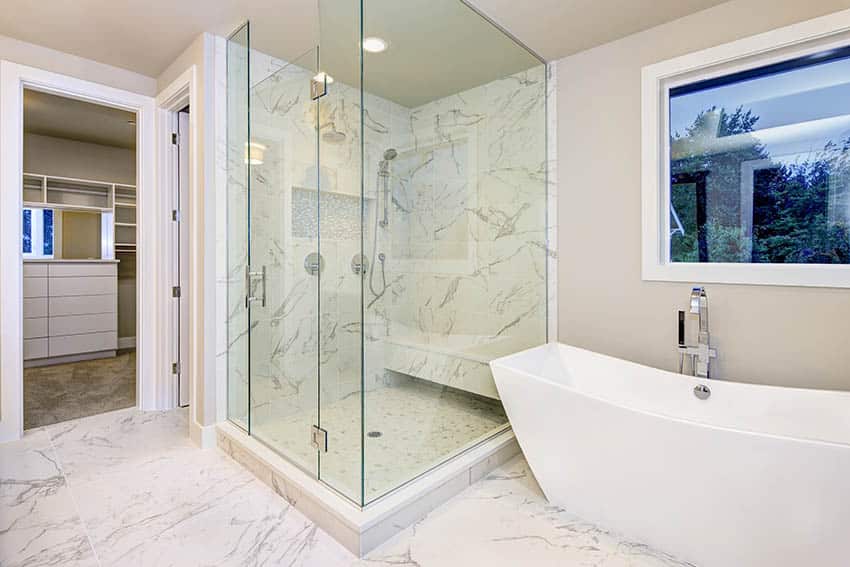
Thinking of installing a marble shower in your bathroom? If you like the natural stone’s elegant look and feel but are worried about the cost of using a lot of marble in your bathroom, you should consider a cultured marble shower.
A cultured marble shower incorporates the look and feel of a real stone shower with certain advantageous properties that arise from its synthetic material.
In this post, we will take a closer look at cultured marble showers, their pros and cons, and why they might just be the perfect types of showers for your bathroom.
What is Cultured Marble?
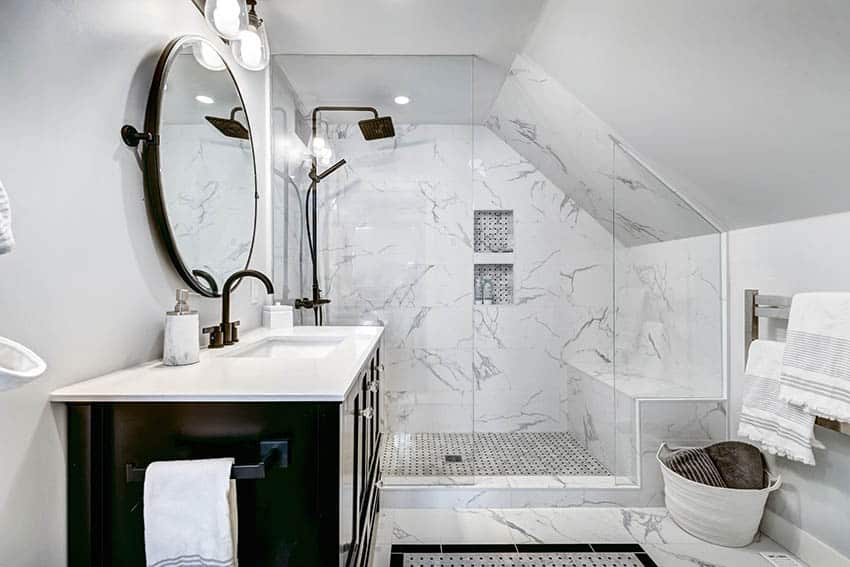
Before we get into the pros and cons of cultured marble showers, we should closely examine what we mean when we say “cultured marble.”
Cultured marble is a type of engineered stone. Engineered stone is a composite material made from crushed natural stone mixed with an adhesive, usually a polymer resin or cement. So, it is an engineered stone.
Engineered stone is a popular option for bathroom fixtures such as showers because they are durable and water-resistant. They are also scratch and heat-resistant. Plus, engineered stone is non-porous, unlike natural stone.
Since this man-made stone is non-porous, it is easier to clean and more hygienic than natural stone. They don’t absorb liquids , so they won’t stain. There is also no place on the surface of engineered stone for bacteria, mold, and mildew to grow.
The material composition of the natural stone portion of the mixture is mostly marble. This gives the finished product the look and feel of real stone and the benefits of engineered materials.
If you want to install this type of enclosure in your bathroom, carefully weigh the cultured marble shower’s pros and cons.
Cultured Marble Panel Shower Pros

Looks Like Real Marble – One of the biggest advantages of this material is that, while it can look as elegant and classy as real marble, it is more versatile and durable.
Most cultured marble is made to look like real stone, but depending on the manufacturer, they may add different color pigments to create some nice colors and shades that aren’t necessarily found in natural stone.
Customizable – It’s not only the color that is customizable but also the shower sizes and shapes. The material is prepared in molds, and you can specify the shape and size you want for the finished product.
It’s much easier to customize a cultured marble shower’s size, shape, and even look than a marble or natural stone shower, as the pieces are molded. To shape natural stone, you often have to cut or carve the stone, which is harder and more labor-intensive.
Affordable – The manufacturing process of using marble dust, resins, and pigments is less expensive, resulting in a cost-effective alternative.
Easy to Install – As it is formed in molds and is lighter than pure marble, it is also easier to install. The lower installation cost will bring down the cost of your shower.
Durable – Cultured marble is also more durable than natural stone, so there is less chance of chipping or damage. Unlike natural stone shower designs, the surface does not need to be sealed. It is a non-porous surface, so it won’t absorb liquid and is stain-resistant.
Easy to Clean – You can easily clean a cultured marble shower yourself. All you need to do is wipe down the surface periodically. Buying a special cleanser for your enclosure walls is unnecessary. You can use any non-abrasive household cleaner and a soft cloth to clean your shower’s surface.
Meanwhile, If you think the surface looks dull, you can also handle it yourself. Simply use a soft cloth and some automotive polish to buff and shine the surface yourself.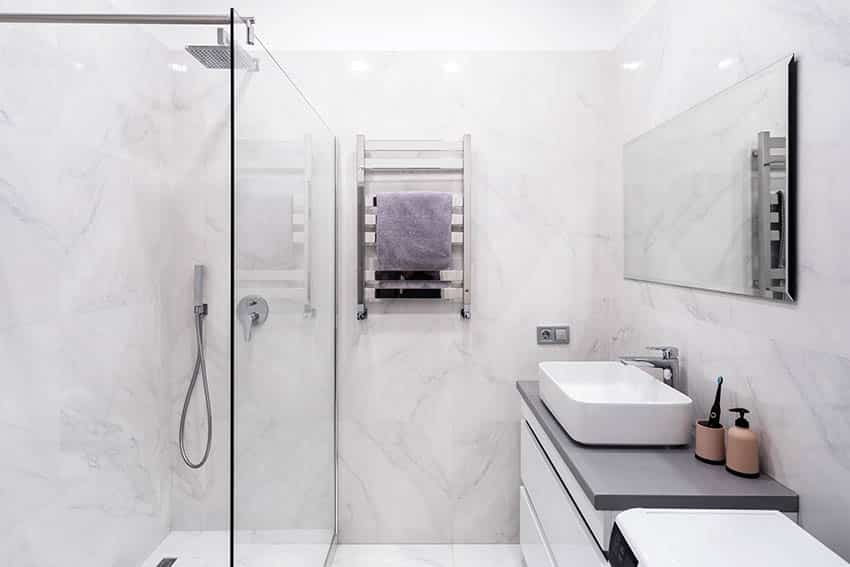
Cultured Marble Panel Shower Cons
When installing a cultured marble shower in your home, you must also consider all the disadvantages.
Not All Cultured Marble Is High Quality – First of all, if you install this type in your bathroom, you must ensure the material is of good quality. Cultured products are synthetic materials, which means quality and manufacturing issues might depend on who and where you buy them from.
Don’t just buy from the first provider you find. Ask for samples of their available and check for any defects. You should shop around and look at what else is available with other providers in your area before making a final decision.
Most cultured marble products come with a warranty, so make sure that you check the conditions before making your decision. Reputable manufacturers will offer warranties for their products, so that’s one other way to make sure that the product you’re looking at is of good quality and will last you for a long time.
Needs to Be Polished – As noted in the shower pros, you can polish a cultured wall enclosure to maintain its shine. While it is a relatively easy job, requiring no special equipment, some people might not have the time or inclination to polish their showers, which can be a con.
Can Be Scratched – You must also be careful about what cleaning products you use when cleaning your cultured marble shower. The material can be scratched if you use abrasive cleaners.
Weaker Finish than Some Other Materials – Cultured marble is relatively heat resistant, but its finish can be damaged by boiling water or placing hot objects directly on the material’s surface. Just be careful when handling heated material, and you should be able to avoid damaging its surface.
Artificial Marble Stone Shower Cost
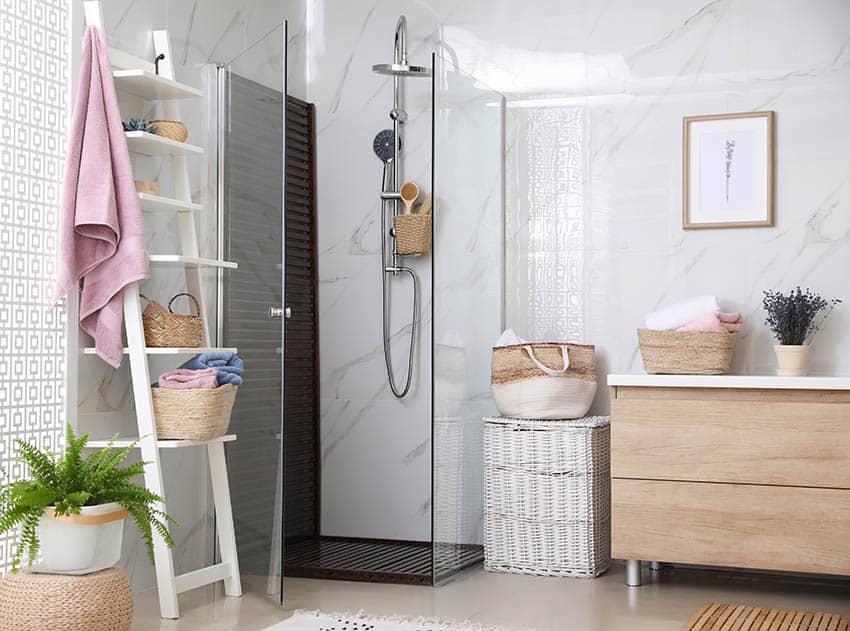
The cost of installing a cultured marble shower is much cheaper than installing a natural stone shower. The average price of installing a marble shower is around $40 per square foot, while an engineered stone variety can be almost half that price.
Cultured marble costs about $10 to $35 per square foot. The final price will depend on the manufacturer and any customization you look for, including colors and shapes. For instance, you can find cultured marble Corian showers that offer a wide range of customization.
Regarding other types of solid surface or natural stone showers, cultured products tend to be the most cost-effective option.
According to Home Advisor, for a 70-square foot shower, the average cost of installation will be as follows:
Cultured marble: $700-$2,450
Cultured granite: $ 2,950-$4,550
Quartz: $3,200-$7,000
Engineered quartz: $3,700-$7,200
Cost may be especially important if you want to install more than one of these types of showers in your home. Read more about the pros and cons of quartz showers here.
Typically, one shower enclosure is needed in the master bedroom and the rooms of other family members or all the bathrooms in your home, including the guest bathroom.
It’s actually quite possible to have more than one enclosure in your home when compared to other stone showers, as it’s much more budget-friendly.
Is Engineered Marble Good for a Shower?
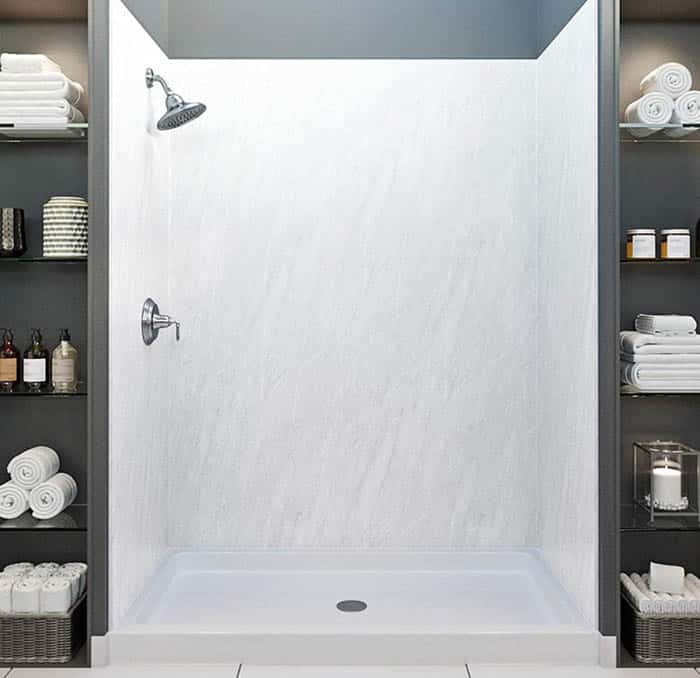
You might be wondering to yourself, is cultured marble good for a shower? The short answer is yes. As we mentioned, the surface is non-porous, meaning it will not absorb or retain water.
Cultured marble will dry quickly because of its non-porous nature. Any spills or excess liquid can easily be mopped up. It is also mold and mildew-resistant.
The pores on a natural stone surface provide a damp environment where mold and mildew can grow. Since engineered surfaces don’t have pores, mold and mildew have no place to grow.
Also, since these enclosures can be installed in one piece or several big pieces, you will get a shower with fewer seams and no grout lines, unlike with tiles.
Problems with Cultured Stone Showers
Be aware of the following problems with cultured marble showers:
- Quality may vary. You can ensure you get the most out of your shower enclosure by purchasing the product from a reputable manufacturer. Most reputable manufacturers will provide a warranty for the engineered stone products that they sell you.
- Cultured marble doesn’t need to be sealed, but you might have to polish it regularly to maintain its sheen.
- Its surface is not scratch-proof. Abrasive cleansers can leave scratches on the surface that can mar its appearance.
How to Clean An Engineered Marble Stone Shower
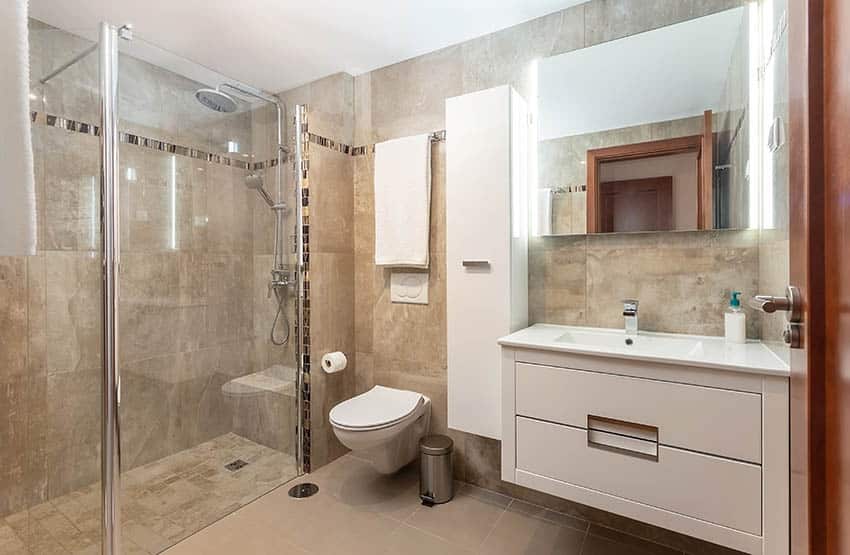
If you want to make the cost of installing a cultured marble worth it, you must ensure that your enclosure remains serviceable for many years. Luckily, these showers are easy to maintain and clean.
While your cultured marble shower will dry quickly, and you don’t have to worry about stains, mold, or mildew setting in, it will still benefit from regular cleaning.
The most basic daily cleaning routine that you should follow for a cultured marble shower is the following:
- Take some warm water and mix in a little dishwashing soap. You can also use gentle laundry soap or window and glass cleaner.
Tip: Make sure to check the label before deciding to use a certain cleanser on your cultured marble shower. Almost any type of household cleaner will do, as long as it’s non-abrasive. You should also avoid alkaline or acid-based cleansers.
- Find a soft clean cloth. A microfiber towel is a good option for cleaning the surfaces. Dip the clean cloth into your cleaning mixture.
Tip: Avoid cleansing or scrubbing pads, as these could scratch the surface, damaging your shower.
- Wipe down the surface of your shower. Let it dry.
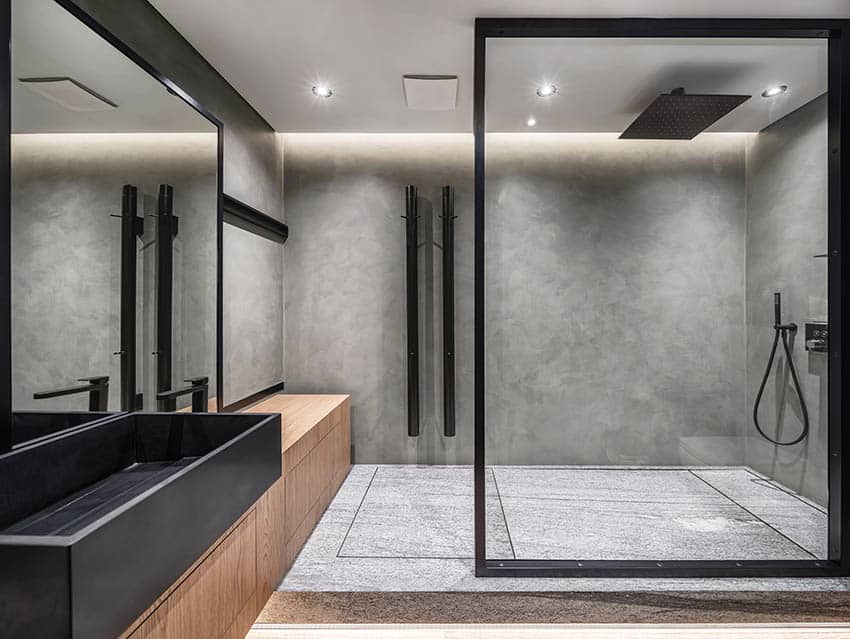
One problem that almost all showers, regardless of material, have is that soap scum might build up on their surfaces. To combat this, you will need to switch up your shower cleaning routine occasionally.
Instead of just a soft cloth and cleanser, you should occasionally clean your shower with a liquid solution that works to dissolve soap scum.
- Mix a solution of 50 percent vinegar and 50 percent water and place it in a spray bottle.
- Spray the mixture on the surfaces of your cultured marble shower.
- Wipe the liquid solution off with a soft cloth and then rinse the area.
- Take another clean, soft cloth and buff the surface till dry.
If you live in an area with hard water, you might also have problems with water stains marring the surface of your cultured marble shower. Water stains on your shower are caused by mineral buildup.
To deal with water stains in your shower, you can use the same vinegar and water solution that you used for soap scum. Spray the solution over the water stains on your enclosure walls. Let the solution sit for about 30 minutes.
After the 30 minutes have elapsed, that is the only time you should wipe down the area. Take a clean, soft cloth, dampen it, and then wipe the surface. You want to ensure that you dry and remove the liquid solution.
Once the solution has been removed, you should also find that the water stain has been removed. If the stain remains, you might have to repeat this process several times.
As we noted, you can and should also take the time to polish your cultured shower surfaces after cleaning. All you need to do is apply some car wax to the surface of your shower.
Depending on the type of car wax you use, you will have to leave the wax sitting on the service for a certain amount of time. The label should contain instructions regarding this.
When the time limit is up, take a clean, damp cloth to the surface and remove the wax. Get a second clean cloth and use it to buff the surface. This should restore the original shine and gloss of your cultured marble shower.
Unlike cleaning, polishing shouldn’t be something you must do too often. You can make it part of a routine, maybe once a week or every two, or play it by ear. If you think your cultured marble shower’s surface is looking dull, bring out the polish; otherwise, leave it alone.
For more related information, visit our gallery of walk-in shower designs.

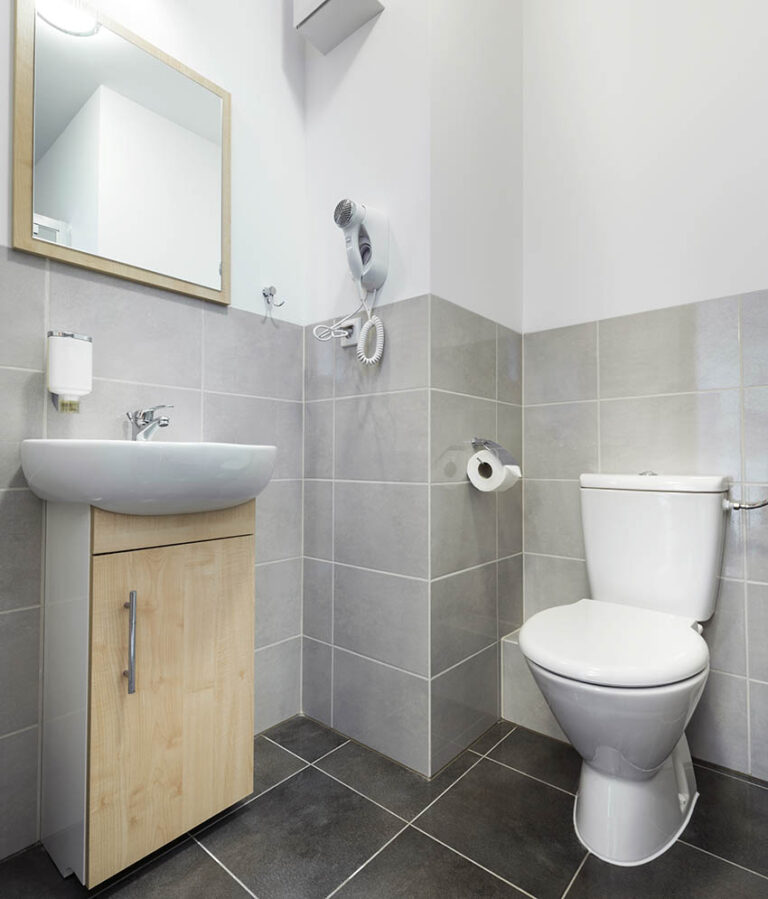


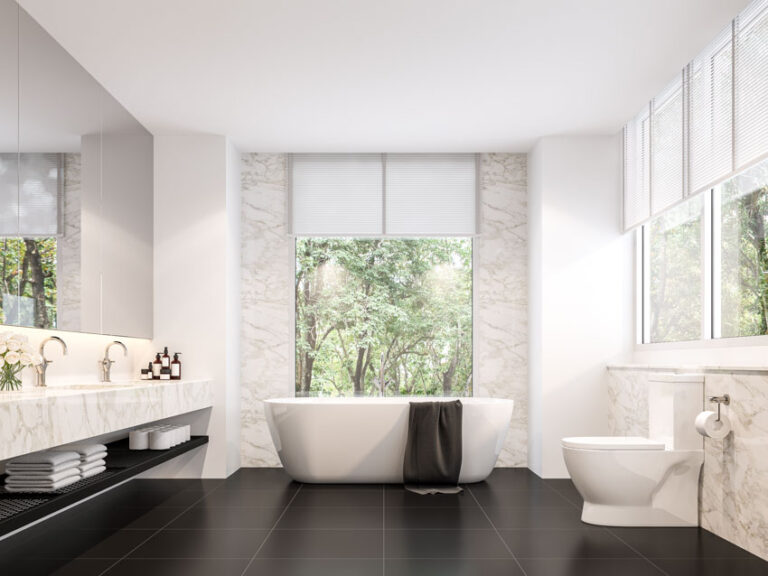

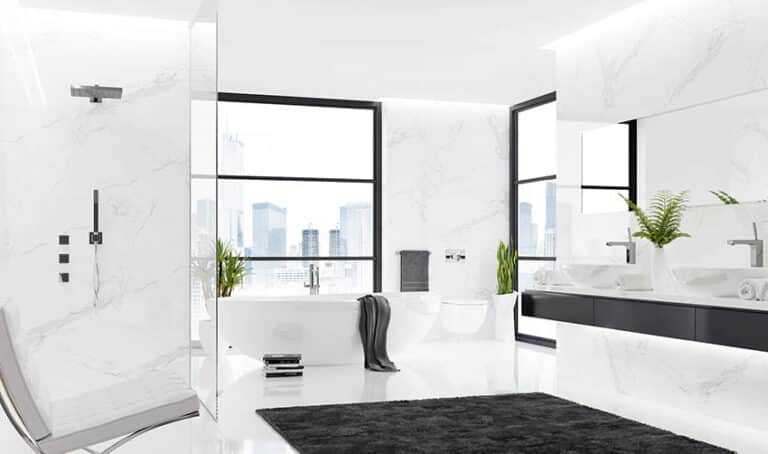
where can I get some cultured marble I am looking to get 4 – 48” x 96” and 2 – 6” x 96”
Why don’t you mention that cultured marble can get mold underneath if not well installed, and sealed.